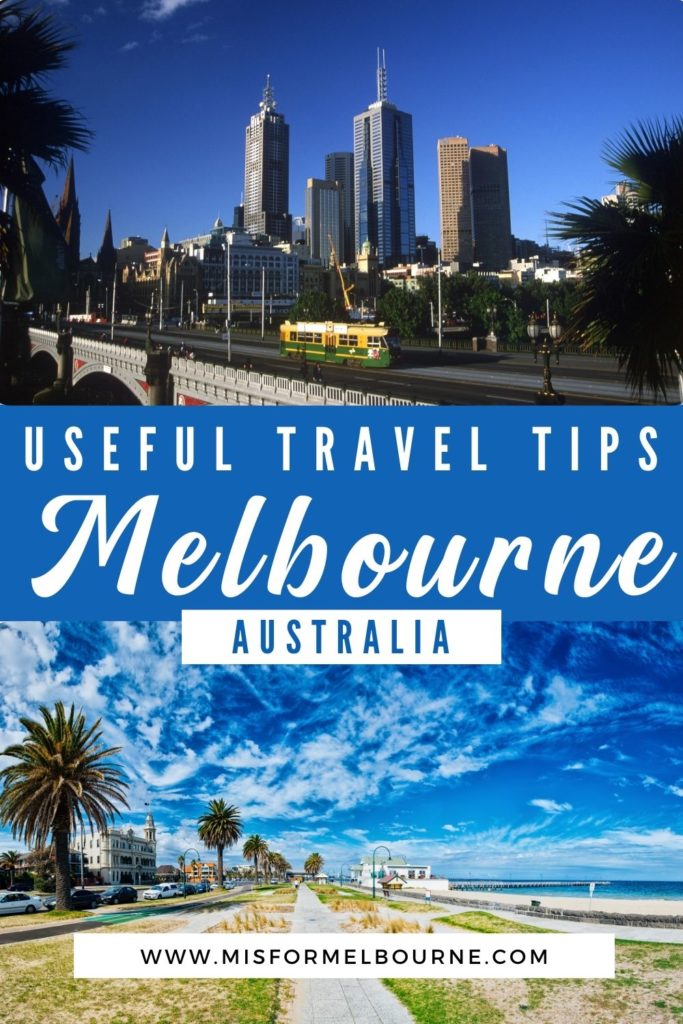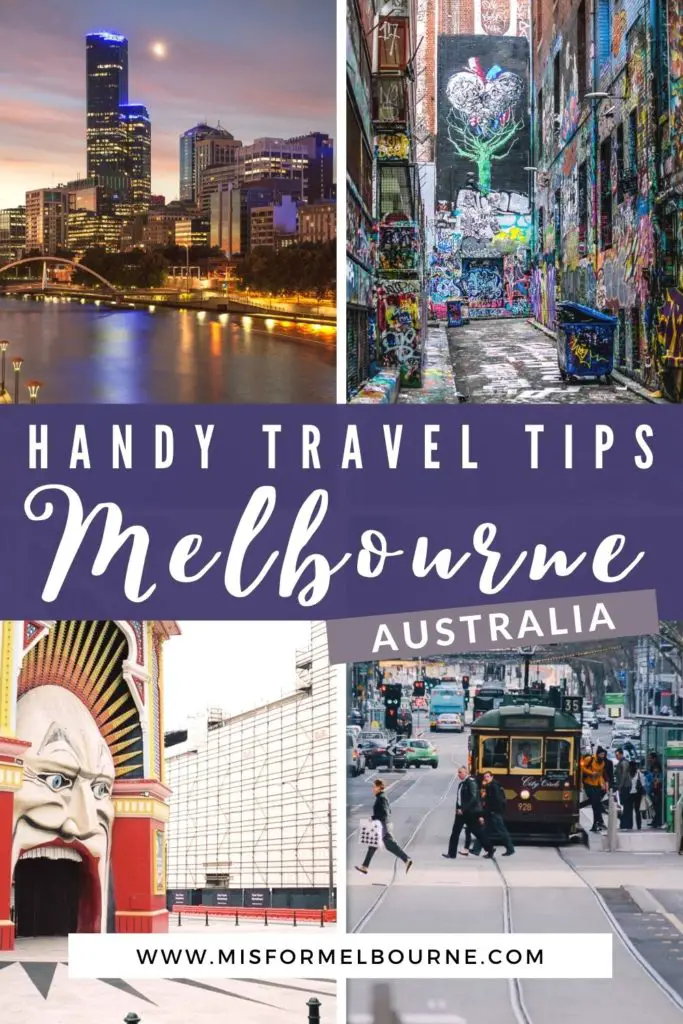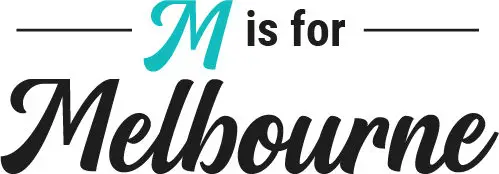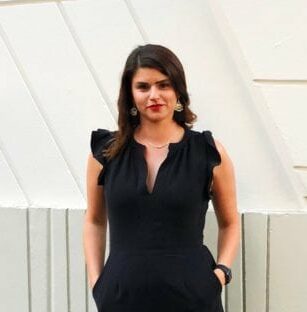Looking for some handy Melbourne travel tips to make sure you have a smooth stay?
First time visiting Melbourne? Welcome! I bet you have a lot of questions. When’s the best time to visit? What should you do here? Where should you stay? How can you save some money?
As a Melbourne local, I’ve spent some time putting myself into “traveller mode” to think about some of the things I’d want to know if I was visiting Melbourne, particularly for the first time.
So, here are a few travel tips and tricks to help you plan the perfect Melbourne trip.
This blog post may contain affiliate links, meaning if you book or buy something through one of these links, I may earn a small commission (at no extra cost to you).
1. Consider the seasons
While Melbourne is a great city to visit year-round, if you’re flexible with your travel plans it’s definitely worth spending some time taking a look at the pros and cons of each season.
I outline these in my post about the best time to visit Melbourne, but here’s a quick and dirty:
- Summer in Melbourne is so much fun – there are plenty of events on and the warmer weather is making everyone happy! Daylight savings is in effect, so you can squeeze a whole lot more into longer days. The downsides: crowds (so book hotels well in advance) and stinking-hot weather.
- In autumn, the leaves in Melbourne start to change, making for some beautiful leaf-peeping around the city. The weather is (usually) fairly mild around March and April, but May cools right down and is the month with the highest rainfall. (If it does rain on your visit to Melbourne, check out a few ideas for indoor activities in Melbourne.)
- Winters in Melbourne can be freezing – but we don’t get snow in the inner city. Even though it’s cold, there are still plenty of fun events on the schedule. And, of course, you can always slip into a cosy bar with a fireplace.
- Finally, spring in Melbourne is gorgeous. Everyone is emerging from the winter hibernation – including all the lovely flowers.
If budget is driving your trip to Melbourne or you’re particularly averse to crowds, then it may be worth considering the high and low seasons:
- High/peak season: The summer months of December to February are the peak travel periods for Melbourne. School holidays begin in mid- to late-December and last until the end of January.
- Shoulder season: March to May and September to November are usually the shoulder seasons, so you can likely nab some good accommodation deals.
- Low season: June to August bring lower prices and fewer crowds – a benefit offsetting the cooler weather.
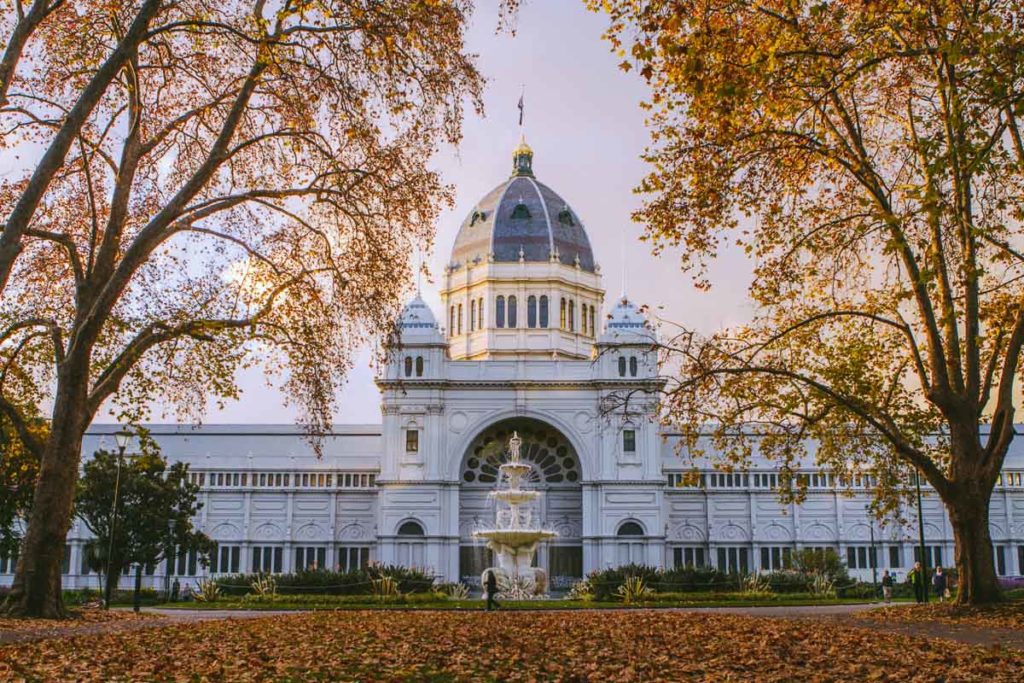
2. Plan your visit around a festival
Melbourne is the events capital of Australia. With something on every month (every day!), time your trip to the city around one of our amazing festivals or events.
We’ve got the Australian Open and Midsumma in January, Laneway Festival in February, the Melbourne Food and Wine Festival in March, the comedy festival in April, RISING winter festival in June, Melbourne Fashion Week and Fringe Festival in October, Melbourne Queer Film Festival in November, and all the Christmasy fun in December.
While it’s great to time your trip with one of these events, it’s also good to be aware that they’re on – because you might actually want to avoid them! When the Aus Open and Grand Prix are on, you can guarantee that hotels are booked out or prices have totally skyrocketed.
3. Plan ahead
Outside of the peak travel season (December to February), you can usually rely on being able to book events and attraction tickets a few days beforehand.
But no matter what time of the year, it pays to seriously think through your Melbourne itinerary and book your must-do activities, whether that’s seeing a show or dining at a particular restaurant, to avoid disappointment. Melbourne is a popular city for tourists, and locals love getting out and about.
Need itinerary ideas to help you plan your trip? I’ve got guides to:
4. Choose where you stay wisely
If you’ve only got a short time in Melbourne, then pick your neighbourhood carefully.
If you want hang out in Fitzroy and Collingwood, then it doesn’t make sense to book accommodation in St Kilda – you’ll end up spending most of your time getting from one place to another on public transport or in an Uber.
Think about the things you absolutely must do on your trip to Melbourne: do you want to be by the beach? Do you want to stay up all night drinking in cool bars? Do you need somewhere quieter so your kids sleep at night?
Each of the Melbourne neighbourhoods I recommend visitors stay in have their various pros and cons, so it’s definitely worth having a think through before you book. I think the Melbourne CBD is a great area to base yourself, and you can check out my guide to the best hotels in Melbourne CBD.

5. Know your airports
If you’re flying in to Melbourne, then you need to know that there are two airports that service the city.
Most flights come into Melbourne International Airport (also known as Tullamarine), which is the closest airport to the city, about a 30-minute drive into the CBD.
The second airport is Avalon, which is further from the city, near Geelong. It’ll take you about an hour to get to the city from here. The airport is currently only servicing a few domestic routes.
Whatever you do, make sure you book a flight to/from the right airport! You don’t want to think you’re flying into Melbourne but actually end up at Avalon. To make your booking process easier, look for the airport codes: Melbourne International Airport is MEL and Avalon Airport is AVV.
6. Get a myki card
Melbourne’s a super walkable city, but we also have an extensive public transport network. If you’ve only got a short amount of time in Melbourne, a car won’t be necessary – and will probably be more trouble than it’s worth.
Despite Melburnians’ regular complaints about our public transport system, it’s actually quite decent. As a visitor to Melbourne, it’ll get you to most places you need to go fairly directly.
We’ve got a range of trams, trains and buses to get you from A to B. You’ll need to purchase a myki, which is a pain for short-term visitors because it does cost a one-off fee of $6. The maximum you’ll pay on public transport is $10 a day. You can calculate fares online.
If you’re sticking to the inner city, take advantage of the Free Tram Zone.
Read more in my full guide to Melbourne transport.

7. Don’t just stick to the CBD on your visit
Melbourne’s central business district (CBD) is where you’ll find many of the city’s main attractions. But you’re doing yourself a disservice if you don’t explore outside of this area.
Neighbourhoods like Fitzroy, Collingwood, Carlton, St Kilda, Prahran and South Yarra – and even further out like Brunswick and Northcote – are where you’ll experience “local” Melbourne life. Outside of the city is where the majority of Melburnians live and play, so there are plenty of cool cafés and restaurants to discover, bars to drink in, live music venues to enjoy and shops to spend money at.
Check out my guide to the best Melbourne neighbourhoods to find something that suits your style.
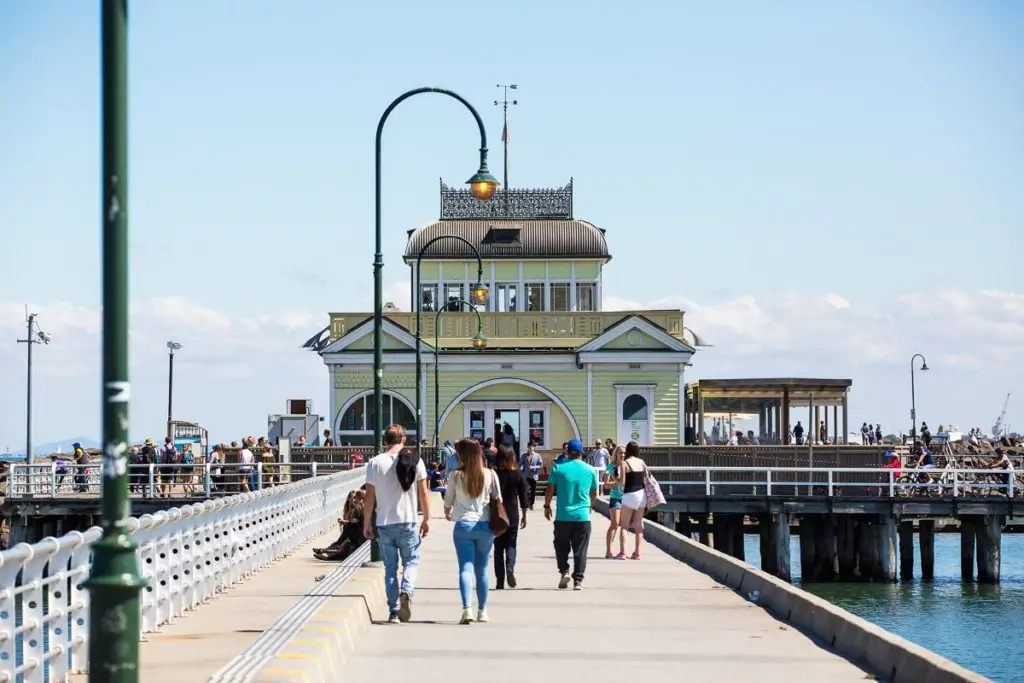
8. Pack appropriately
There’s an adage that all Melburnians live by: this city has four seasons in one day.
It’s not uncommon to wake up to a cloudy day with a chill in the air, before it hits 35°C by midday, ending with a thunderstorm and wild winds at night.
This means you need to pack appropriately. Always carry an umbrella and a light, packable rain jacket. Wearing layers is a great idea!
9. Come hungry
Melbourne is a foodie’s paradise. In this city you can eat your way around the world, from Afghani food to Italian dishes to Yemeni cuisine. There’s something for every budget, as well. I highly recommend planning your itinerary around food! I’ve got a guide to 75+ of my favourite restaurants in Melbourne.
Many restaurants have had to introduce securing reservations with a credit card because people were booking and then not turning up – resulting in significant lost income to already struggling businesses. Even if you don’t need to leave a credit card with your reservation, if you change your mind, give the restaurant 24-48 hours’ notice so that they can open up your reservation to someone else. Hospitality in Melbourne has been hit hard, so show them some love and respect!
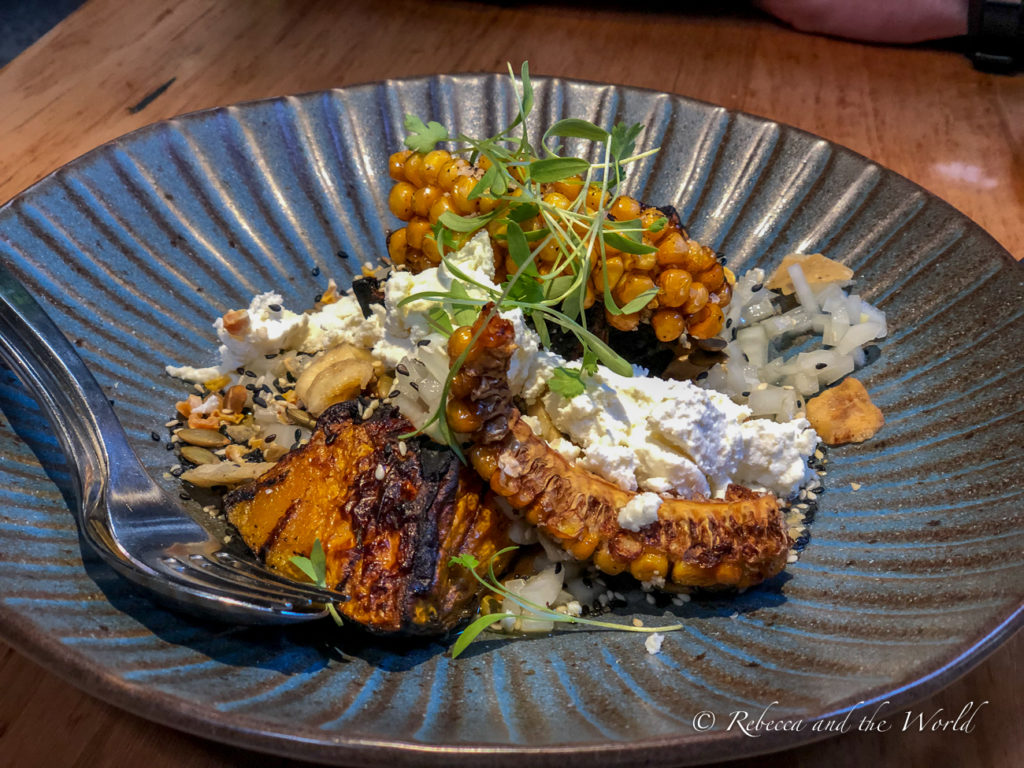
9. Pay at the counter
Speaking of food, if you’re visiting Melbourne from overseas, you may be confused about how to pay at the end of a meal. In cafés and more casual restaurants, the staff will usually leave the bill on your table once you’ve finished eating but you need to pay it at the counter.
In more upscale restaurants, they’ll bring the bill and an EFTPOS machine to you.
I wanted to include this tip here because I have lived in multiple countries and I had completely forgotten this was how things happened in Australia when we moved home! It took me a while to get used to, and even now I still ask where to pay.
10. Expect to pay more on public holidays
If you’re eating out on a public holiday, then expect to pay a 10% or even 15% surcharge.
This frustrates me to no end, but it’s there to cover the higher wages restaurants need to pay their staff on public holidays.
Check with restaurants before booking because some even add a weekend surcharge!
11. Dine early to save money
If you’re willing to eat dinner early, then the new First Table app can serve you up some huge discounts.
Book the first table of the evening at a participating restaurant and you can get a whopping 50% off your meal.
Using First Table is straightforward. Visit the First Table app or website to find a list of participating restaurants in Melbourne offering the discount for their first tables of the day or night. A small booking fee of $10 secures this early bird offer, unlocking half-price meals.
11. Take a tour for local insights
I used to avoid tours and preferred to explore on my own – that’s how I’d discover those local secrets and hidden gems, right?
Wrong. Having a local guide when you visit a new city can open up your eyes to history, culture and hidden secrets that you’ll never discover on your own.
In Melbourne you can join some amazing tours that celebrate our city’s Indigenous culture, food, street art and history. I’ve got a guide to the best Melbourne tours (including some free ones), as well as excellent walking tours in Melbourne and the best Melbourne food tours.

12. Save some money
Melbourne is expensive, there’s no doubt about that! But there are ways to save money here.
- Book accommodation in advance. I like using Booking.com.
- Do some or all of the many free things to do in Melbourne, or check out these tips for saving money in Melbourne.
- If you’re hankering to see a show, see if you can save some money through TodayTix, Halftix or TIXAT12.
- If you’re travelling as a family, one of the best Melbourne tips to save money is to buy an iVenture Card or Melbourne City Card. I have a post that compares all the Melbourne attractions passes, but I think the Melbourne and Beyond Pass is the best option, as you have 90 days from purchase to use the pass (you can read my full Klook Melbourne and Beyond Pass review for all the details).
13. Learn the road rules
If you’re only in Melbourne for a short time, you really don’t need to rent a car.
The only time you’d need to rent a car is if you’re planning to take a day trip from Melbourne and want to drive yourself (rather than take a day tour).
If you do decide to drive in Melbourne, there are a few unique rules you’ll need to know about.
Sharing roads with trams
You’ll be sharing the road with trams. Trams can’t swerve or get out of your way. They’re also a lot heavier than your rental car, so don’t mess with them.
If you’re behind a tram, only overtake them when they’re moving. You’ll know passengers are alighting from a tram when the doors open (with big “STOP” signs on them) and the tram lights are flashing. NEVER drive past a tram when the doors are open because you could hit someone.
Hook turns
In the CBD, we have a unique/weird/scary thing called a hook turn when you want to turn right into some streets.
Instead of sitting in the right lane and waiting until it’s clear for you to turn, you sit in the left lane and then turn right as the lights turn orange (and if no cars are oncoming).
These hook turns can be very complicated if you’ve never done one. I still plan my trips in the city to avoid them!!
14. Leave your luggage
Have to check out of your hotel but your flight’s not until later in the day? No problem – leave your luggage and head out to continue your city exploration.
There are several luggage storage options around Melbourne. My top pick is Bounce, because it has the most luggage storage locations around the city. Bag storage charges start from $8 per bag per 24-hour period.
Other handy services are Mind My Bag and Stasher, and there are also luggage storage lockers at Southern Cross Station or a Travellers Aid at Flinders St Station.
15. Know your escalator etiquette
Okay, this is just my personal gripe, but if you’re visiting Melbourne you need to know that you stand on the left side of the escalator if you just want to take a ride to the top/bottom. If you’re in a hurry, then use the right side to walk up or down. Don’t stand still on the right hand side – you’ll be holding up a bunch of grumpy Melburnians.
And if you want a thrill ride… take the escalator at Parliament Station.
Found this article useful? Consider buying me a coffee as a way to say thanks!
What other Melbourne travel tips do you have for visitors?
Related posts
Before you go… you might like these other Melbourne travel blogs:
- The absolute best things to do in Melbourne
- Where to stay in Melbourne
- How to spend a weekend in Melbourne
- What to do with 3 days in Melbourne
- The ultimate 5 days in Melbourne itinerary
Best Melbourne resources
- Check out my Melbourne travel guide for everything you need to know about planning a trip to Melbourne
- Look for flights to Melbourne on Skyscanner.
- Book accommodation on Booking.com or Expedia for your Melbourne trip. The Ovolo Laneways Hotel is a good choice in the CBD.
- You won’t really need a car in Melbourne, but if you do want to get out of the city, then rent a car through DiscoverCars.
- Pick up a copy of the Lonely Planet Pocket Melbourne to help plan your trip.
MELBOURNE TRAVEL GUIDE: PIN IT FOR LATER
Save these Melbourne travel tips to Pinterest so you can plan your trip to Melbourne later.
